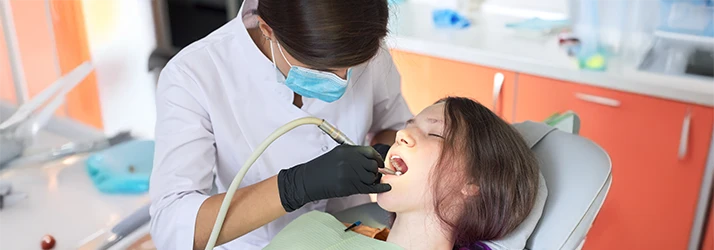Post-Op Oral Sedation Care for Children: What Parents Need to Know

At Campbell Pediatric Dentistry, your child’s safety and comfort after oral sedation in Campbell CA and Los Gatos CA is our highest priority. Knowing how to care for your child in the hours following their dental procedure can make all the difference in ensuring a smooth, worry-free recovery. Below, we’ve outlined essential aftercare instructions to help you feel confident and prepared.
What Happens After Oral Sedation?
After receiving oral sedation, your child will likely remain drowsy and may have slower reflexes or coordination for several hours. This is completely normal. During this time, close adult supervision is critical. You’ll want to keep a close eye on them until they are fully alert and back to their usual self.
Getting Home Safely
The ride home matters. Make sure your child is:
- Buckled securely in their car seat
- Reclined slightly with their head and neck supported
- Positioned so their airway stays open—keep their chin up and their head turned slightly to the side if they’re sleeping
- Checked frequently to monitor breathing; if they snore, gently reposition their head to clear the airway
Keep Activities Light and Safe
Rest is key. Your child might feel groggy, irritable, or unsteady after sedation. To avoid accidents:
- Skip sports, running, climbing, or anything requiring balance for the rest of the day
- Plan quiet activities like watching movies, reading, or napping
- Keep your child nearby so you can monitor them closely
Food and Fluids: Start Slow
Hydration comes first. Encourage small, frequent sips of clear fluids—water, diluted juice, or electrolyte drinks like Pedialyte are great options.
When your child is ready to eat:
- Start with soft, bland foods like applesauce, mashed potatoes, or yogurt
- Avoid anything greasy, chewy, or spicy until they’re fully alert
- If your child feels nauseous, let them rest and try fluids again in 30 minutes
Managing Numbness and Discomfort
If your child received a local anesthetic, parts of their mouth may remain numb for 2 to 4 hours. Keep them from:
- Chewing on their lips or tongue
- Sucking on their cheeks
- Scratching their face or inside their mouth
For mild discomfort, you can give acetaminophen (Children’s Tylenol) or ibuprofen (Children’s Motrin) according to the dosage instructions. A low-grade fever (under 101°F) can be normal after sedation and is typically nothing to worry about.
When to Call Us or Seek Help
While most children recover quickly, keep an eye out for:
- Vomiting that won’t stop
- Breathing difficulties or snoring that don’t improve with repositioning
- Unusual drowsiness or unresponsiveness that lasts longer than expected
- Severe mouth pain, swelling, or unusual bleeding
If your child has trouble breathing or shows signs of a medical emergency, call 911 right away. Otherwise, feel free to contact Campbell Pediatric Dentistry—we’re here to help.
What to Expect the Next Day
Most children bounce back by the following day, ready to return to their usual activities. If anything feels off or if you have questions, don’t hesitate to give our office a call. Our team is always happy to guide you through the next steps.
Thank you for trusting Campbell Pediatric Dentistry with your child’s care.
Following these simple post-sedation instructions can make all the difference in ensuring a calm, safe recovery. If you need additional support, we’re just a phone call away.
Campbell Pediatric Dentistry
476 E Campbell Ave Suite A
Campbell, CA 95008
Los Gatos Kids Dentistry
15595 Los Gatos Blvd Suite C
Los Gatos, CA 95032



